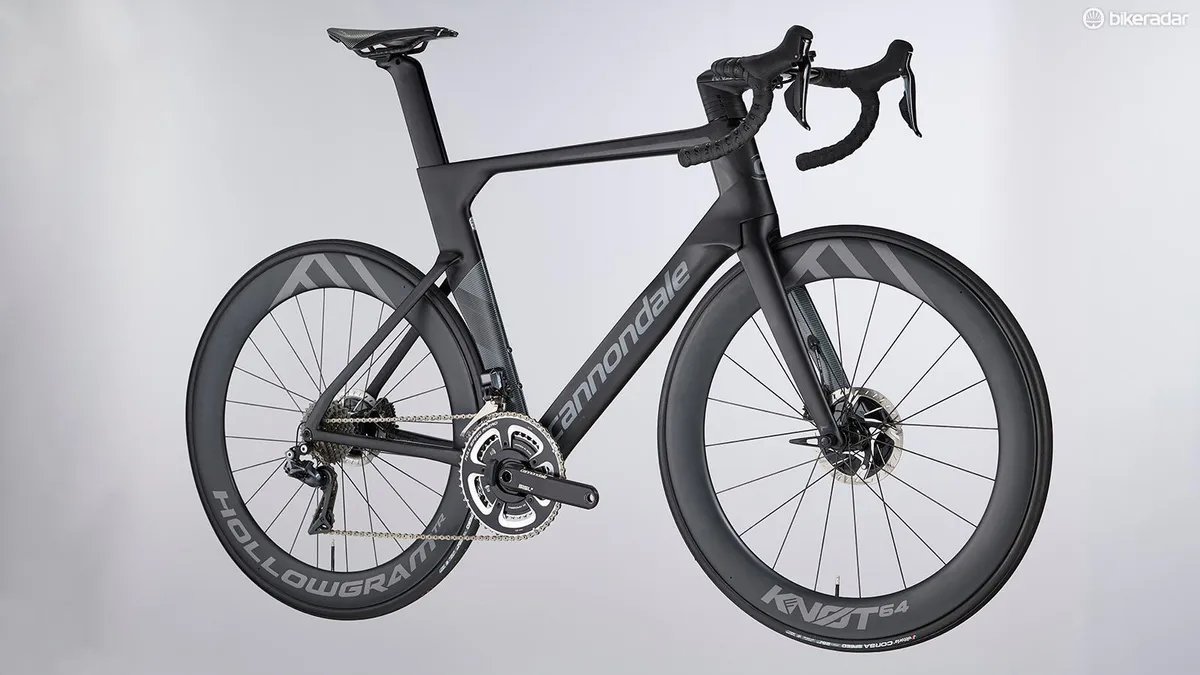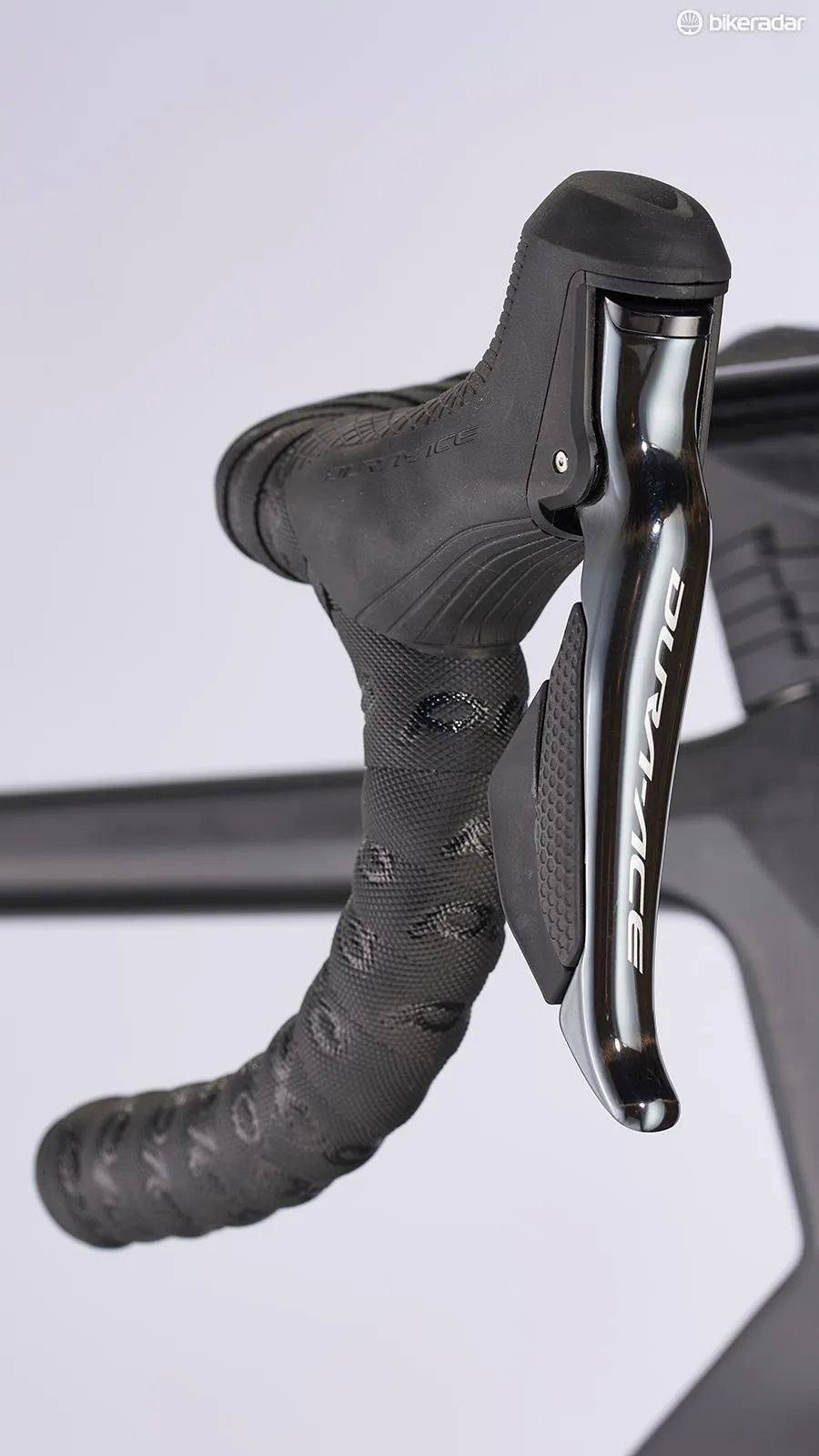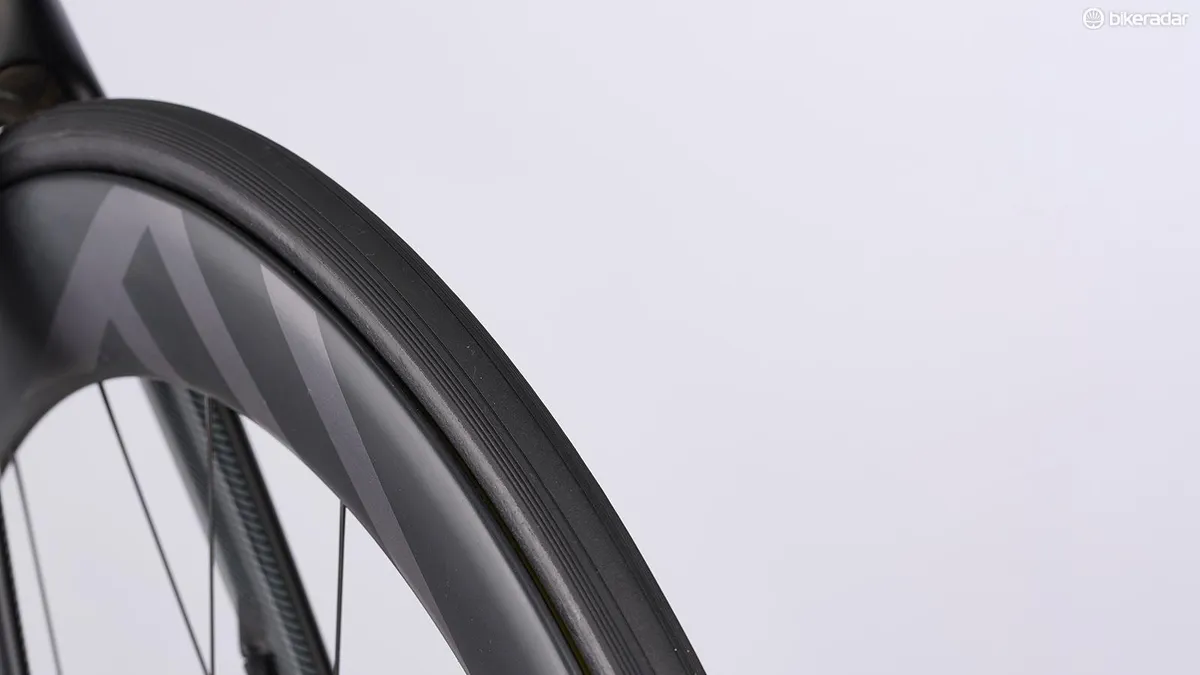The original SystemSix arrived back in 2006/7, an early innovation from Cannondale that blended the Pennsylvanian brand's cutting-edge CAAD aluminium design with a carbon fibre monocoque (effectively mating a CAAD8 back end with a monocoque carbon front).
The Cannondale SystemSix Hi-Mod Dura Ace Di2 is one of our Bike of the Year bikes for 2019 has been crowned our Race Bike of the Year. To read reviews of the other contenders and the categories tested across road, mountain and women's bikes, visit our Bike of the Year hub page.
- Cannondale SystemSix Hi-Mod Dura-Ace Di2 first ride
- Best road bikes 2019: how to choose the right one for you
Cannondale claims its new SystemSix is the fastest bike in the world. Now that’s a hard statement to prove or disprove, but in a recent independent test it did have the lowest drag figures in the wind tunnel (203w) compared to the Cervélo S5 (206w), Ridley Noah Fast (213w), Specialized Venge (208w) and Trek Madone (212w).
Drag figures aren’t the be-all and end-all though. The way a bike handles and rides over a variety of surfaces and gradients, and in different conditions, has a major influence on overall speed averages. So an aero bike needs to find a balance between beating the wind, the conditions and the terrain without beating you up in the process.
This SystemSix was in development for more than three and a half years. If, like us, you’ve always thought of an aero road bike as a pro-only tool, then it’s worth noting that, according to Cannondale’s antipodean aero-guru Nathan Barry, at faster than 15kph / 9.3mph half of the resistance acting on a rider is air, so we should all benefit from superior aerodynamics.
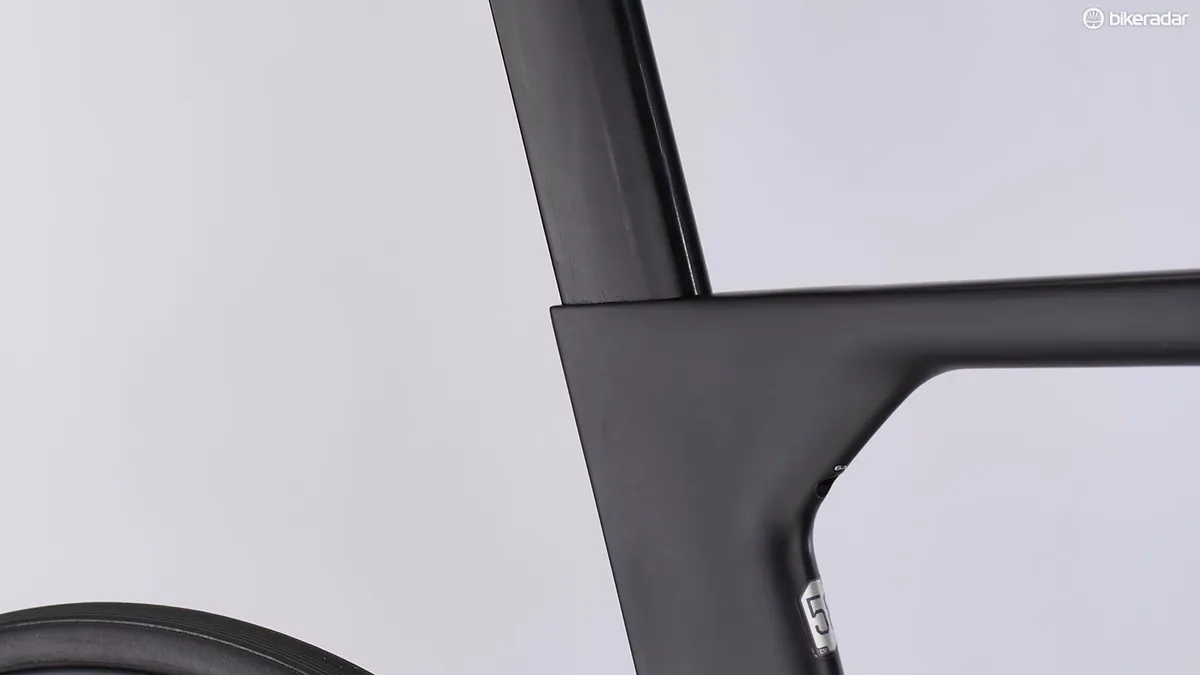
The NACA tube profiles are in a Kammtail design. For a tube section to be efficient aerodynamically, it’s important that the air flowing over the surface remains attached to the surface. When airflow separates, it creates relative drag so the truncated tail cheats the air into believing it's still there.
The shape of the tubes is where Cannondale claims most of the aero gains are made. The top tube seat tube junction and the seatpost itself were all designed with the rider in situ, so the aero shaping takes into account the rider's legs moving.
The rear stays are low slung from the seat tube and, along with the chainstays, look minimal compared to the deep oversized front end. This lack of mass (and some clever carbon composition) gives the back end enough flexibility to reduce road chatter and buzz.
The seriously deep Knot 64 wheels are what you’d expect to find on a TT or triathlon bike and these, at 1,600g a pair, are impressively light.
The rim shape is based on a licensed patent from aerodynamic wheel pioneers HED. The super-wide rim (more than 30mm externally, 21mm internally) is shod with a slim 23c tyre, which sounds strange in these times of ever larger rubber, but it measures 25.8mm mounted. The bike can handle up to a 30c tyre should you wish to go bigger, though that would compromise the out-and-out aero.
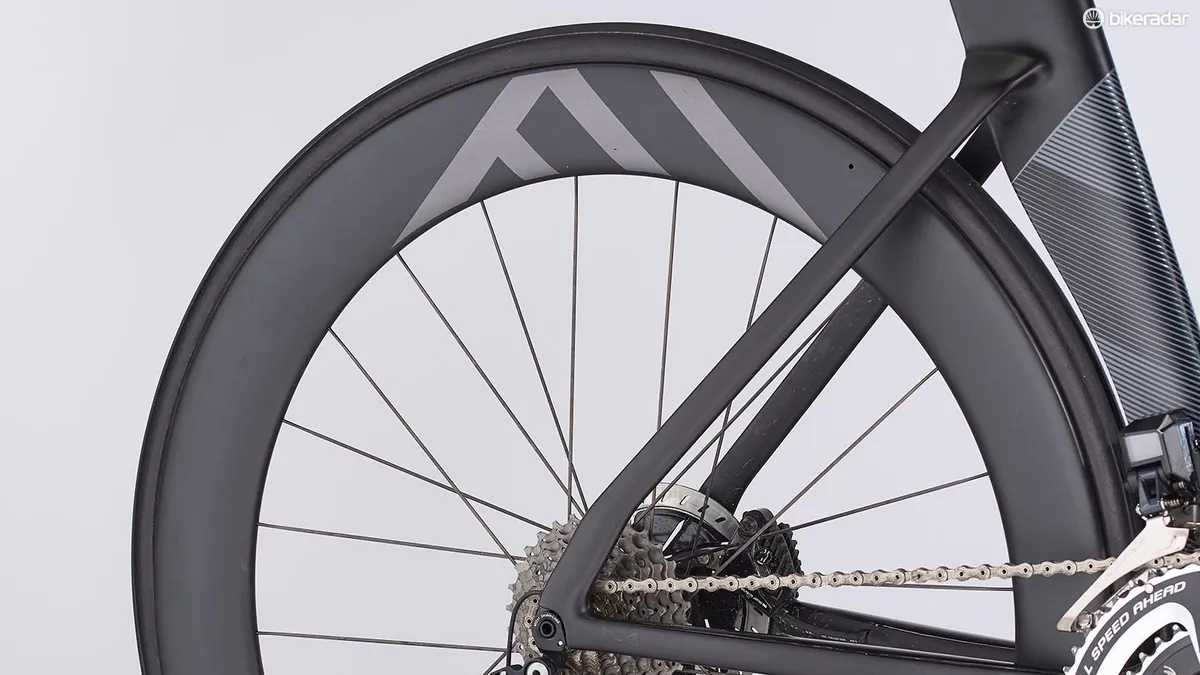
That might be a compromise worth making, though. When I first tested the SystemSix on the smooth, well-maintained roads around Girona, I didn’t feel that the tyres offered any downside. Back in the UK, though, riding in the winter and on some pretty poor roads, the usually dependable graphene-infused Rubino Pro Speed tyres are a bit more prone to flats.
For winter, I’d prefer to go a bit bigger and a bit tougher and then set up the 23s tubeless for summer.
And Cannondale, please take a note from Giant’s book: if you’re going to supply a bike with tubeless-ready wheels and tyres just go the whole hog and supply them set up tubeless — it’ll save a few grams and improve the ride with it.
As a road bike, the SystemSix is a true marvel. It's bullet-fast and efficient
At least when I did get a puncture, the clever Speed Release system makes removing and replacing the wheel a lot easier and less messy. An oversized (12mm) axle threads into the dropout just like a standard thru-axle but the lever side features a slotted dropout.
The double lead thread means it’ll tighten and undo in five turns rather than the usual 10. The thru-axle slides out part way but is anchored via a slot in the hub so it never needs to be fully removed.
Up front, the Knot bar and stem is another clever watt-saving piece of aero design. The stem discards the traditional round clamp for a cradle-like shape, which the aero bar sits on. The clamp bolts thread through the bar itself in slots that offer eight degrees of pitch adjustment. Adjustability is key when it comes to handlebar position and it's not ususally an option on one-piece designs.
The stem is also available in lengths from 80mm to 120mm, so you should be able to get the fit just right. It's 2D forged and heavily machined. The lower half is a composite cover that acts as a cable holder which guides the cables and hoses into their internal routing. Routing the brake hose and Di2 wiring through the bars and down into the head tube ensures a clean-looking bike and also aids overall aero performance.
Shimano’s flagship Dura-Ace Di2 group delivers the drivetrain and braking, and shifting is accurate, smooth and quick thanks to Cannondale’s SiSL2 chainset and FSA rings.
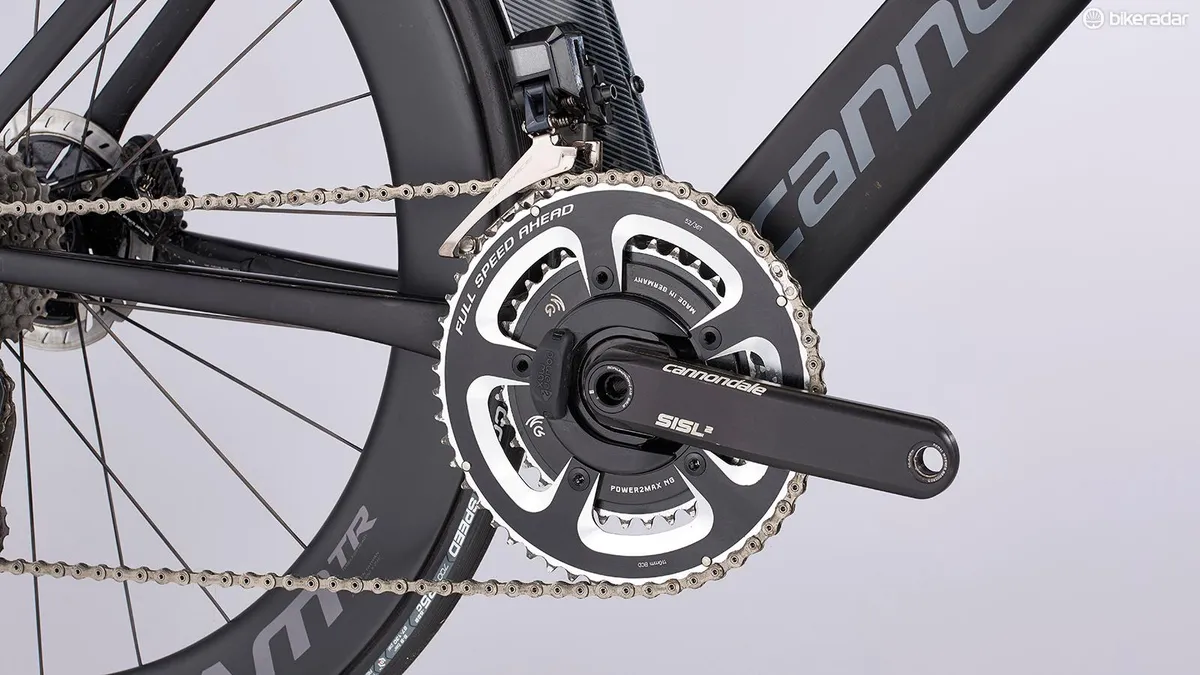
On Cannondale’s premium models, the SiSL2 chainset is usually matched to its machined masterpiece spider ring set up, but the SystemSix is different. Cannondale ships the bike with a Power2Max meter built into the crank. To activate it, you need to download Power2Max’s app and pay £420 / €490 / $490.
I’m not sure about how much of an incentive this is. On the one hand, it keeps the price down (the SystemSix is £1,000 less than the £9,500 Specialized S-Works Venge with the same drivetrain and similar equipment and a power meter with 4iiii included). You’d be looking at €600 to fit the same Power2Max power meter and a set of compatible chainrings. I guess you could use the activation cost as a bargaining chip when haggling with your Cannondale dealer.
Cannondale SystemSix Hi-Mod Dura Ace Di2 ride impressions
My overarching feeling when riding the SystemSix is one of familiarity. This big, bold, brash aero-optimised race bike feels just like one of my all-time favourite race bikes, the wonderful SuperSix Evo, and when you look at the geometry it’s easy to see why.
The reach on the SystemSix (398mm) is an indiscernible 0.1mm shy of the Evo and the stack (580mm) is just just 4mm taller. It shares the same short (1,000mm) wheelbase thanks to the use of short (for a disc bike) chainstays (405mm), and the 73-degree head and 73.5-degree seat angles are close to the Evo’s parallel 73.3-degree numbers. The trail on the fork is within 1mm too.
The SystemSix has the same rapid point-and-shoot handling that makes the Evo so addictive but, on all but the steepest climbs where the Evo’s flyweight gives it the edge, you’ll be going so much faster.
The slight flare to the drops means plenty of wrist clearance when sprinting and the bar combines stiffness for sprints and plenty of vibration damping
The SystemSix covers the ground with such resolute ease it's easily on a par with the latest generation of gloriously accomplished aero bikes, such as the Cervélo S5, Trek Madone and Specialized Venge. It’s worth noting, however, that, as with the Cervélo, the steering does have stops, so you can’t spin the bars to full lock.
It's designed like that to aid internal routing and protect the frame in a crash, and you'll only notice it when you're navigating the bike through a crowded garage or workshop.
The ride quality impresses too. The SystemSix isn't quite as smooth as the Madone but it matches the S5 for buzz reduction and feels just as direct and resolutely stiff under sprinting as the Venge.
The contact points are particularly good. The wide, flat Knot bar is comfortable on the hoods and works well as a handhold when you're grinding up long ascents, or as a shelf to rest your elbows when you're banging out a rhythm on longer flat straights.
The slight flare to the drops means plenty of wrist clearance when sprinting and the bar combines stiffness for sprints and plenty of vibration damping. It's wrapped with great quality Prologo tape, which matches the lovely Prologo Dimension saddle, with its shortened dimensions, low weight and generous padding.
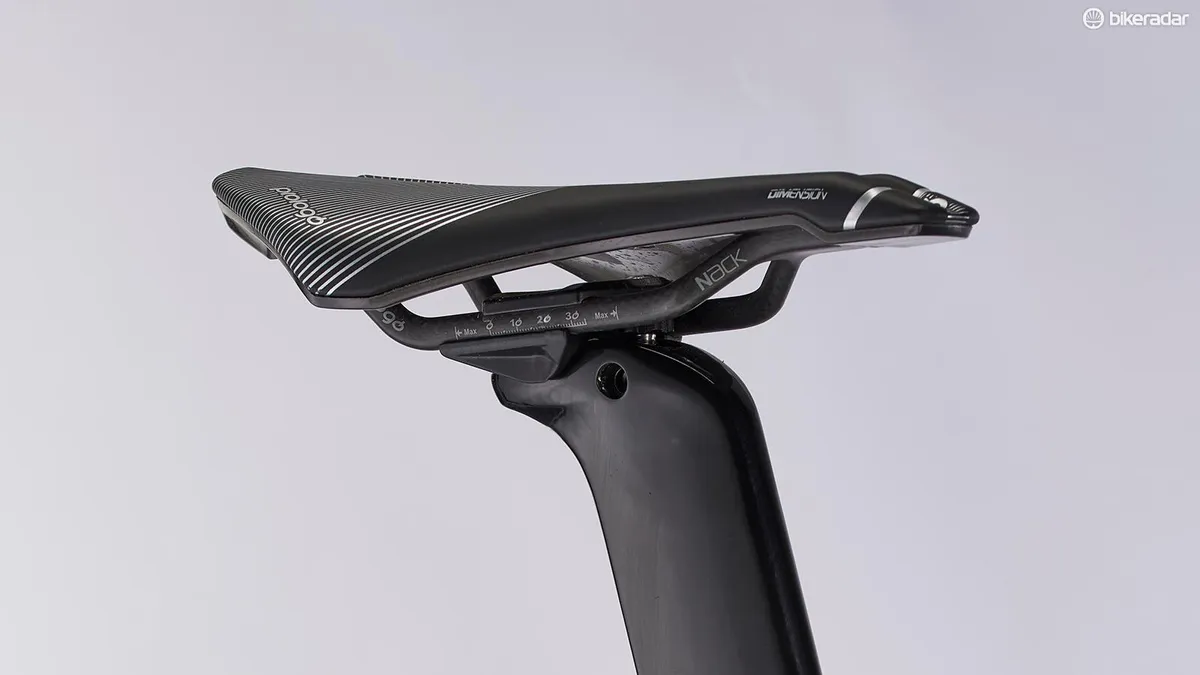
The wheels roll smoothly and, despite their large depth, don’t prove to be a handful in the wind. Yes, you’ll get an increase in pressure on the steering when hitting a gusting winter crosswind, but the bike doesn’t buck or jerk like inferior shapes can.
As a road bike, the SystemSix is a true marvel. It's bullet-fast and efficient, and the power numbers I’m getting are lower than on my own bike. But let’s forget the unemotional world of data for a minute, riding the SystemSix is a joyous experience: it's fast, nimble and comfortable and it deserves its place at the forefront of current aero road bikes.
Cannondale SystemSix Hi-Mod Dura Ace Di2 specification
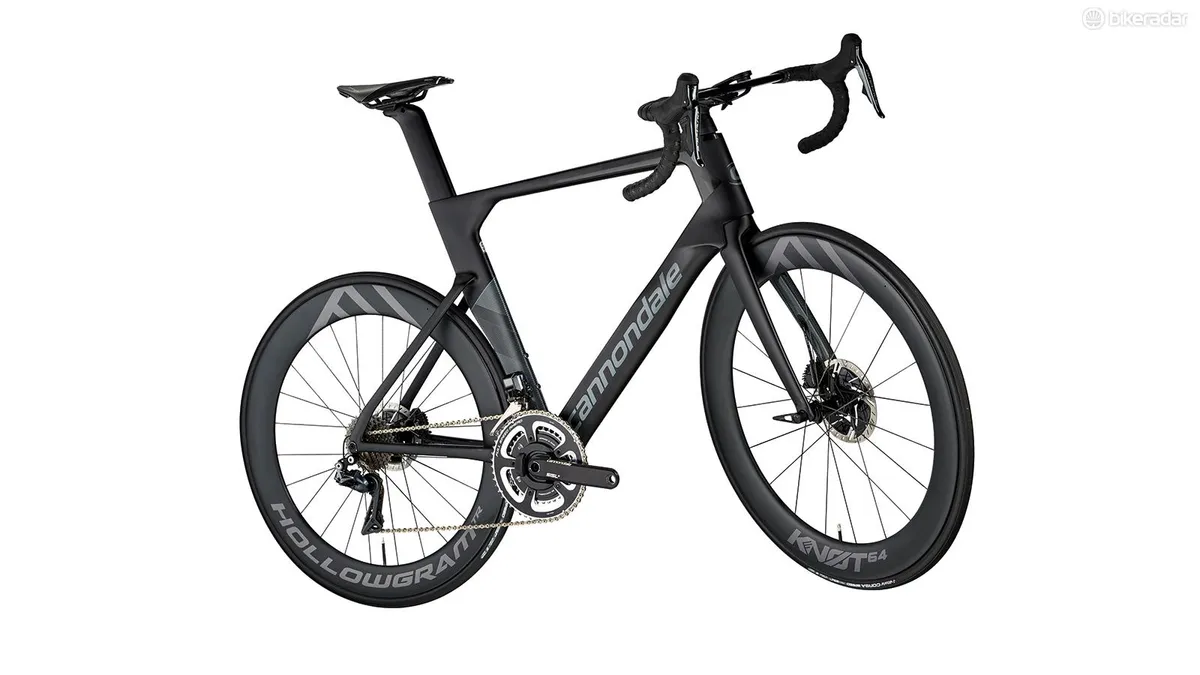
- Sizes (*tested): 47, 51, 54, 56, 58*, 60, 62cm
- Weight: 7.74kg (58cm)
- Frame: BallisTec Hi-MOD Carbon
- Fork: BallisTec Hi-MOD Carbon
- Chainset: FiCannondale Hollowgram SiSL2 with power2max NG Eco power meter (pre-installed, not activated)
- Chain: Shimano Dura-Ace
- Bottom bracket: Cannondale Alloy PressFit30
- Shifters: Shimano Dura-Ace Di2
- Mech: Shimano Dura-Ace Di2
- Brakes: Shimano Dura-Ace
- Wheelset: Hollowgram KNOT 64
- Tyres: Vittoria Rubino Pro speed 23c
- Stem: Cannondale Knot SystemBar
- Bar: Cannondale Knot SystemBar
- Seatpost: Cannondale Knot Carbon, 330mm
- Saddle: Prologo Dimension NACK
Cannondale SystemSix Hi-Mod Dura Ace Di2 geometry
- Seat angle: 73.5 degrees
- Head angle: 73 degrees
- Chainstay: 40.5cm
- Seat tube: 55.3cm
- Top tube: 57.6cm
- Head tube: 17.2cm
- Fork offset: 4.5cm
- Trail: 5.7cm
- Bottom bracket drop: 6.9cm
- Bottom bracket height: 27.1cm
- Wheelbase: 1,000mm
- Stack: 58cm
- Reach: 39.8cm
BikeRadar would like to thank Stolen Goat, Lazer, Northwave and Effetto Mariposa for their help and support during our Bike of the Year test.
